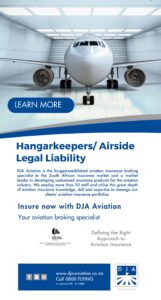Monthly Archives: November 2022
Bell Completes U.S. MARINE CORPS Ah-1Z Program of Record
Bell Completes U.S. MARINE CORPS Ah-1Z Program of Record
Completes United States Military program of record for H-1 Helicopters

A U.S. Marine Corps AH-1Z Viper with Marine Light Attack Helicopter Squadron 469 fires at a target during Resolute Dragon 22 at Yausubetsu Maneuver Area, Hokkaido, Japan, Oct. 6, 2022. Resolute Dragon 22 is an annual bilateral exercise designed to strengthen the defensive capabilities of the U.S.-Japan Alliance by exercising integrated command and control, targeting, combined arms, and maneuver across multiple domains. (U.S. Marine Corps photo by Cpl. Lorenzo Ducato)
Middle East (Nov. 03, 2022) – In a ceremony at the Amarillo Assembly Center, Bell Textron Inc., a Textron Inc. (NYSE: TXT) company, celebrated the delivery of the 189th AH-1Z Viper to the U.S. Marine Corps, completing the Program of Record (POR) for the latest version of the storied H-1 platform. Bell completed the UH-1Y POR of 160 aircraft in 2018 bringing the combined H-1 POR to 349 aircraft.
“The first production lot of US Marine Corps H-1s was ordered in 1962, and they changed the way Marines fight today,” said Mike Deslatte, Bell H-1 vice president and program director. “Completing the AH-1Z and UH-1Y deliveries to the US Marine Corps adds one more chapter to the legacy of the H-1 platform.”
Bell has been producing H-1s for the U.S. military since 1959. Bell originally designed the H-1 for the U.S. Army with the iconic “Huey.” In 1966 Bell created the AH-1 Cobra as the first dedicated gunship. In 1970, the Bell UH-1N brought twin engine capabilities to more than 28 countries, and in 1984 the AH-1W provided the U.S. Marine Corps increased attack helicopter capability.
The current generation AH-1Z Viper and UH-1Y Venom are the most agile, mobile, and survivable combination of aircraft used by the Department of Defense. The 85% common platforms are the only two aircraft that share so much commonality, providing the Marines with logistical agility and reduced operating costs. The AH-1Z achieved initial operating capacity in February 2011 and the UH-1Y achieved initial operating capacity in August 2008. The first combined Viper/Venom deployment with a Marine Expeditionary Unit occurred in 2009.
“H-1s are key to the 2022 Marine Corps Aviation Plan,” said Col. Vasillios Pappas, Light/Attack Helicopters program manager (PMA-276). “With the US program of record now complete, the Marines have the flexibility to manage and deploy the helicopters based on current and future mission requirements as established at the start of the program.”
The H-1 production line is still active in support of foreign military sales to approved U.S. allies. Bell continues to produce AH-1Z Vipers for the Kingdom of Bahrain and will manufacture eight UH-1Ys and four AH-1Zs for the Czech Republic in 2023.
Since the first delivery of the AH-1Zs and UH-1Ys to the U.S. Marines, the H-1 mixed fleet has accumulated more than 450,000 flight hours through a full spectrum of military operations. Bell will continue to support the U.S. H-1s with lethality, survivability, and reliability upgrades through a long-term modernization plan that helps ensure the aircraft keep an overwhelming tactical advantage for generations.
###
About Bell
Thinking above and beyond is what we do. For more than 85 years, we’ve been reimagining the experience of flight – and where it can take us.
We are pioneers. We were the first to break the sound barrier and to certify a commercial helicopter. We were aboard NASA’s first lunar mission and brought advanced tiltrotor systems to market. Today, we’re defining the future of advanced air mobility.
Headquartered in Fort Worth, Texas – as a wholly-owned subsidiary of Textron Inc., – we have strategic locations around the globe. And with nearly one quarter of our workforce having served, helping our military achieve their missions is a passion of ours.
Above all, our breakthrough innovations deliver exceptional experiences to our customers. Efficiently. Reliably. And always, with safety at the forefront.
About Textron Inc.
Textron Inc. is a multi-industry company that leverages its global network of aircraft, defense, industrial and finance businesses to provide customers with innovative solutions and services. Textron is known around the world for its powerful brands such as Bell, Cessna, Beechcraft, Hawker, Jacobsen, Kautex, Lycoming, E-Z-GO, Arctic Cat, Textron Systems, and TRU Simulation + Training. For more information, visit: www.textron.com.
Certain statements in this press release may project revenues or describe strategies, goals, outlook or other non-historical matters; these forward-looking statements speak only as of the date on which they are made, and we undertake no obligation to update them. These statements are subject to known and unknown risks, uncertainties, and other factors that may cause our actual results to differ materially from those expressed or implied by such forward-looking statements, including but not limited to risk factors related to U.S. government contracts and foreign military sales as described in our filings with the Securities and Exchange Commission.

Royal Jordanian Air Force Purchase Bell 505
Royal Jordanian Air Force Agrees to Purchase Bell 505s to Boost Training Capabilities
Ten advanced trainers purchased by the RJAF
Aqaba, Jordan (Nov. 1, 2022) Bell Textron Inc., a Textron Inc. (NYSE: TXT) company, announced the signed agreement for the sale of 10 Bell 505 helicopters to the Royal Jordanian Air Force (RJAF) today at The Special Operations Forces Exhibition & Conference (SOFEX) in Aqaba, Jordan.
The contract includes the delivery of the aircraft with a flight training device and a comprehensive computer-based training package to enable an enhanced approach to basic and advanced rotorcraft flight training at the King Hussein Air College in Mafraq, Jordan.
“It is with profound gratitude to the Royal Jordanian Air Force that we share news of this agreement to purchase the Bell 505s as the new helicopter trainer for the Air Force,” said Patrick Moulay, senior vice president, International Business, Bell.

“We are dedicated to the Armed Forces, the Air Force, and the citizens of Jordan and offer our commitment to ensure the best of service. The Bell 505 will serve alongside the men and women of the Air Force by playing a critical role in ensuring the operational readiness of its cadets,” commented Sameer Rehman, managing director Africa and Middle East, Bell.

The Bell 505 is a popular aircraft for commercial and military customers alike, offering phenomenal power, optimal visibility and high-tech Garmin avionics. The company recently celebrated the 400th Bell 505 delivery since its launch in 2017.
“We look forward to adding the Bell 505 aircraft to our fleet and providing our pilots with one of the best possible aircraft for their training. The addition of 10 new aircraft will enable us to further expand our operations in the country, in turn increasing the capabilities of the Royal Jordanian Air Force,” said Brig. Gen. Mohammad F. Hiyasat, Commander, Royal Jordanian Air Force.
As the most advanced helicopter in its class on the market, details has been considered in the design of the Bell 505, starting with the fully digitally controlled engine, and advanced avionics that dramatically reduce pilot workload and maximize safety in a multitude of operational scenarios.

SOFEX is the world’s leading special operations forces and homeland security exhibition. Currently in its 13th year, the show was established by His Majesty King Abdullah II to provide a platform to present and demonstrate new and innovative equipment and technologies in security operations.
For more information, visit the Bell website.












































































































































































































